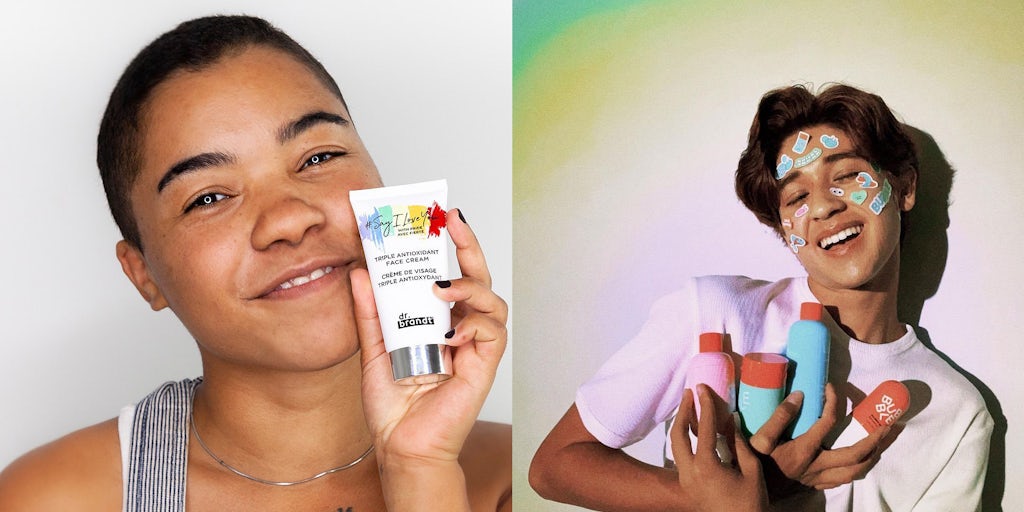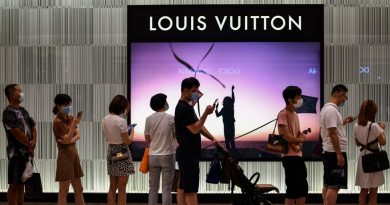The Attico’s CEO Talks Brand Identity, Growth, Building Longevity – WWD
MILAN — Don’t expect to be wearing a The Attico-bearing sweater anytime soon. The brand’s next phase of growth won’t be merchandise-driven.
In the year that marked the brand’s foray onto the runway, one goal remains unchanged: building longevity by sticking to The Attico’s identity, one that is firmly intertwined with its founders Gilda Ambrosio and Giorgia Tordini’s vision of contemporary femininity.
In an exclusive interview with WWD, media-shy chief executive officer Stefano Marcovaldi detailed ambitions for the brand, from strengthening its accessories business and making a push in the Asia Pacific region, to setting the foundation for retail and building a meaningful proposition that can stand the test of time.
Founded in 2016 by Ambrosio and Tordini at the height of their social media fame, the brand revealed in 2018 that Archive Srl, an independent investment company controlled by Ruffini Partecipazioni Holding, was acquiring a minority, 49 percent stake.
Marcovaldi, cofounder and managing director at Archive, took on the CEO’s role determined to retool the corporate structure and leverage the potential he and Pietro Ruffini had seen. Marcovaldi and Ruffini share the cofounder and managing director roles at Archive. The latter is the son of Moncler Group chairman and CEO Remo Ruffini.
“Archive’s mandate is to try and build over the next 20 years a portfolio of brands and creative languages aimed at the new generation… currently we are investing in and supporting the development of brands that, in our view, are defining the language, experience and product codes in a modern way,” the executive said, speaking from its walnut wood-furnished office, a glass box at the center of The Attico’s Milan headquarters.
Stefano Marcovaldi, CEO of The Attico and cofounder and managing director of Archive Srl.
Courtesy of The Attico
Since the investment, the corporate structure has morphed into that of a full-fledged, scalable business.
“In the brand-building process, all strategic levers needed to be governed from within, in full alignment with the founders’ [vision],” he said. Since Archive’s arrival, distribution, which previously was outsourced to a third party, has been brought in-house and manufacturing deals with suppliers broadened and strengthened.
Marcovaldi said The Attico will post revenues above 30 million euros this year, up from 27 million euros in 2022. That is swift growth from revenues of 5 million euros in 2018, the year Archive made its investment.
This reflects the meaningfulness and authenticity of the brand’s proposition, the CEO contended.
“We are aware that we have made the first baby steps in the right direction… and what gives us confidence in the future is the team we’re building… but we’re aware that in order to achieve the goal of relevance… that we have set, there’s a lot of work still to be done,” the executive said.
“From a value standpoint what we have always read in the brand and especially in Gilda and Giorgia as women and creatives is a concept of independent femininity, sometimes unapologetic… and I think this has remained unchanged if not strengthened over the years,” he said.
“What struck a chord the most five years ago is that fashion is a wonderful sector but also characterized by so much ‘background noise.’ They [Gilda and Giorgia] were able to define a very recognizable, authentic, and very modern language in a short time frame,” Marcovaldi argued. “We’ve always read The Attico as a creative project, of course everybody has a background, but the thing that was most interesting to us was their creative vision. The brand especially at that time was very strongly new, modern and recognizable.”
The Attico’s first collection in 2016 comprised boudoir-inspired velvet and silk robes and sultry evening dresses that exuded a mischievous appeal and catered to the social media-fueled, cool-chasing niche of thirtysomethings. But Marcovaldi said there was already more to it.
“It seemed we could read in them a legitimacy in building a universe around the female wardrobe,” he said. “The work over the past few years has followed this strategic trajectory and the perception of the brand’s development is very much linked with the extension of [the founders’] creative vision into new territories, new categories,” he offered.
Since 2016 The Attico has added denimwear, tailoring, daytime options, shoes, bags, accessories, including sunglasses, and beachwear.
The Attico RTW spring 2024
Giovanni Giannoni/WWD
A former consultant already operating in the luxury and fashion spaces, Marcovaldi said the ambition when first joining forces with Ambrosio and Tordini was to “make sure The Attico could become one of Italy’s most relevant womenswear projects of its generation.”
That goal has remained unchanged.
“We talk a lot about ensuring brand longevity… across two axes, the first one with a mid- to long-term [vision] on products. Every category, every function we unlock needs to have a strong identity across silhouettes, designs, fabrics… the second axis is driven by communication… as an ongoing [effort] to make sure that through communication projects linked to collections and shows, as well as pure branding [initiatives], we can maintain continued energy and relevance,” he said.
In 2020 the brand embraced the see now, buy now format, starting with the spring 2021 collection. It continues with that strategy even in the wake of its first show last September. The latter paraded a collection set to stand apart from seasonal lineups.
In addition to displaying The Attico’s digital-native mindset and the overall shift in the internet- and social media-fed consumer behavior, the move suggests business acumen.
“A brand of our size… finds itself competing for customer [acquisition] with megabrands boasting communication budgets that are much more powerful than ours, so in order to try and be nimbler and smarter,” the see now, buy now model was best and was confirmed by a strong sell-through track record, he said. “We believe that in terms of relevance and closeness to consumers it’s a more modern move today,” he said, without ruling out embracing a different go-to-market strategy if needed.
The brand counts 270 stockists globally and generates 75 percent of its business in Europe and the U.S., including e-tailers. Italy represents 20 percent of sales, while about 10 percent is generated in the Middle East, with a scattered presence in the Asia Pacific region.
“In terms of [regions] already developed, we are not aiming to extend the perimeter of our presence, but rather strengthen our partnerships with existing clients,” the CEO said. In the Asia Pacific region — mindful that a successful strategy requires cross-pollination among product development, communication activities, and distribution mix — he said the priority is the dynamic South Korean market.
Although not planning further diversification into new product categories, the accessories business — formally introduced with shoes for the fall 2020 season — is a burgeoning one, currently accounting for 35 percent of the business.
That figure is growing, the executive said, but he added that bags and shoes are very different businesses, the latter more aligned to how consumers tap into ready-to-wear, with a stronger inclination to approach brands without a firmly established heritage.
“Handbags are still marked by a strong aspirational component… we’re working on it with very specific ideas, trying to leverage a few, very recognizable, codes across styles,” he said, highlighting how the brand has embraced the category by tapping into the evening and daily handbag universe, “rather than the functional design world… which is presided over by megabrands,” he contended.
The Attico bags and shoes.
Courtesy of The Attico
The vintage-nodding, sculptural Midnight clutch, as well as the triangular top-handle Friday, among others, have proven a hit at retail, the executive said. They are priced between 600 and 1,900 euros — save for special editions reaching up to 4,000 euros — “a more aggressive” positioning compared to ready-to-wear and shoes. The collection is sold through about 50 of The Attico’s wholesale partners to “avoid dampening the brand’s grip.”
Since introducing the category, The Attico has simultaneously rolled out several pop-up activations with key partners, capitalizing on the full-range offering it has built. Over the past year they included Antonia in Milan; The Webster Los Angeles; Antonioli in Ibiza; Galeries Lafayette in Paris; Saks and Bergdorf Goodman in New York, as well as Harrods in London, Harvey Nichols in Dubai, and Space Mue in Seoul.
“Pop-ups are by definition nimbler and more efficient initiatives than macro-investments for permanent [retail] locations. Over the past few years, we thought that over-investing in such a strategy could bring about dynamism and freshness, not only in terms of distribution strategy but also branding-wise, all the while allowing us to position the brand in location with highly qualified footfall,” Marcovaldi explained.
A The Attico takeover of the Antonioli boutique in Ibiza, Spain.
Courtesy of The Attico
In the wake of The Attico’s first show held last September in Milan — a success with retailers — it linked with key wholesale accounts to make the collection instantly available to customers. They included Harrods, LuisaViaRoma, and The Webster Los Angeles, among others.
It could also be viewed as a retail test and try, but not so soon.
Asked about opening The Attico’s first store, Marcovaldi said that “in the short-term we are not planning a broad retail expansion.”
Milan could be an option, since the brand’s ethos is inextricably linked with the city as the designers have built a signature of a-bit-undone attitude that speaks to their clique in town but easily caters to women across demographics and geographies looking to emulate the founders’ cool.
“The Attico is a brand rooted in Milan but looking towards the future in a modern, international way — as much as the city itself is doing,” Marcovaldi said.
Following the interview with WWD, in the 2023 “Le Quotabili” study by Milan-based consultancy Pambianco Strategie di Impresa ranking companies with the highest potential to go public, The Attico nabbed the third spot in the roster of the small-cap fashion companies.









